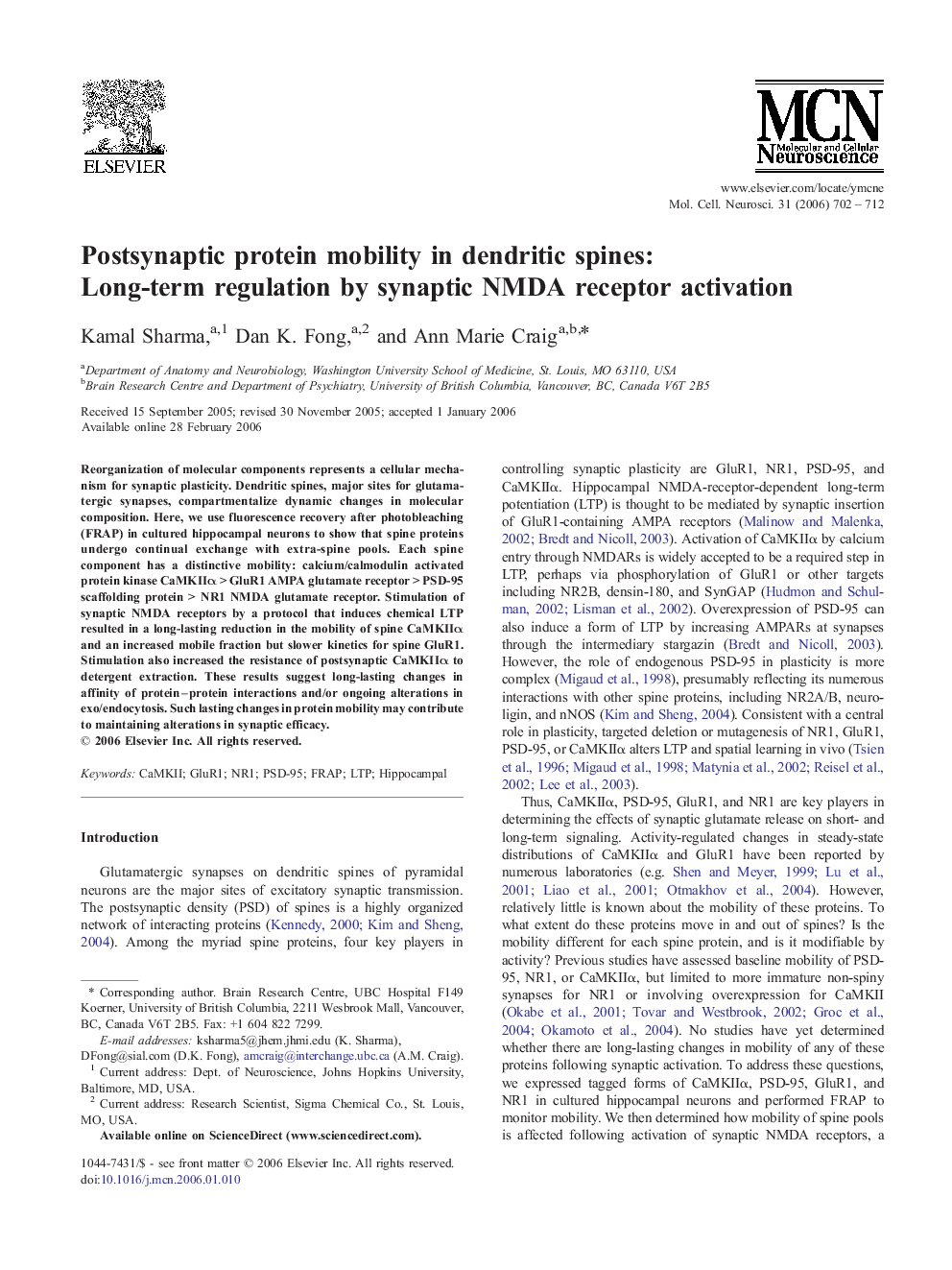| Article ID | Journal | Published Year | Pages | File Type |
|---|---|---|---|---|
| 2199489 | Molecular and Cellular Neuroscience | 2006 | 11 Pages |
Reorganization of molecular components represents a cellular mechanism for synaptic plasticity. Dendritic spines, major sites for glutamatergic synapses, compartmentalize dynamic changes in molecular composition. Here, we use fluorescence recovery after photobleaching (FRAP) in cultured hippocampal neurons to show that spine proteins undergo continual exchange with extra-spine pools. Each spine component has a distinctive mobility: calcium/calmodulin activated protein kinase CaMKIIα > GluR1 AMPA glutamate receptor > PSD-95 scaffolding protein > NR1 NMDA glutamate receptor. Stimulation of synaptic NMDA receptors by a protocol that induces chemical LTP resulted in a long-lasting reduction in the mobility of spine CaMKIIα and an increased mobile fraction but slower kinetics for spine GluR1. Stimulation also increased the resistance of postsynaptic CaMKIIα to detergent extraction. These results suggest long-lasting changes in affinity of protein–protein interactions and/or ongoing alterations in exo/endocytosis. Such lasting changes in protein mobility may contribute to maintaining alterations in synaptic efficacy.
